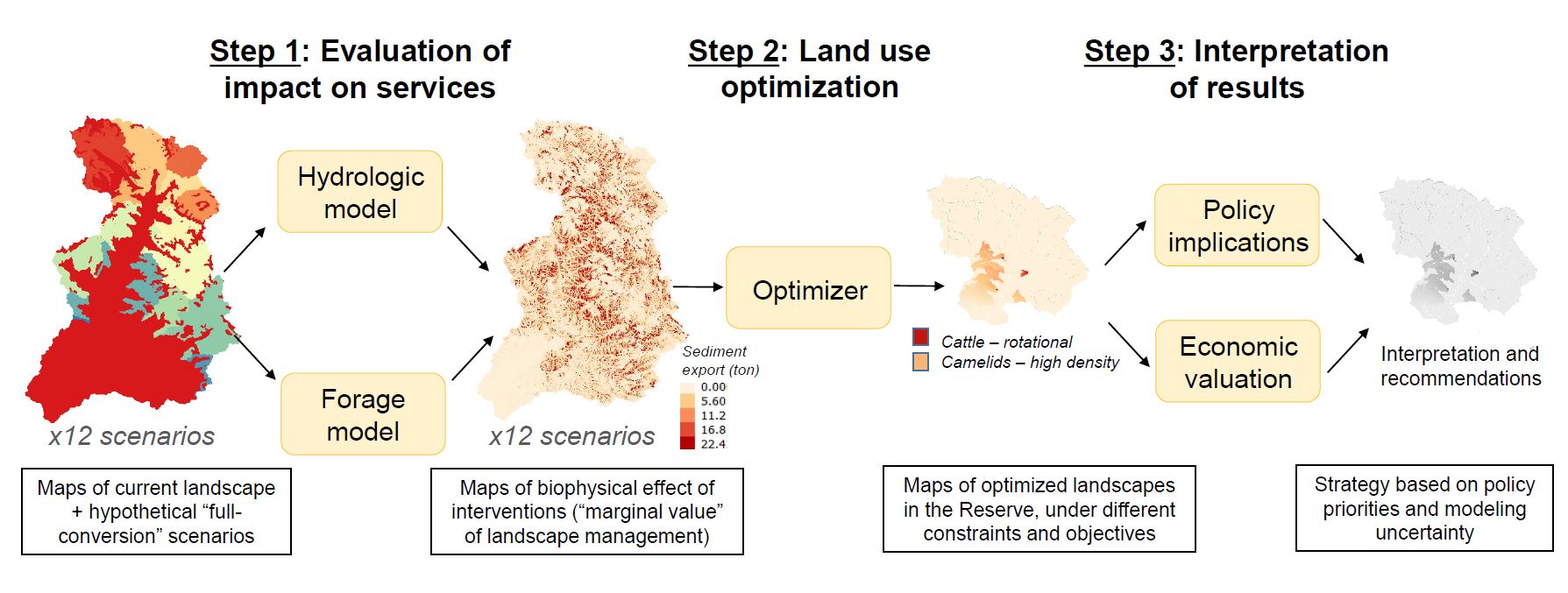Abstract
Integrated watershed management allows decision-makers to balance competing objectives, for example agricultural production and protection of water resources. Here, we developed a spatially-explicit approach to support such management in the Cañete watershed, Peru. We modeled the effect of grazing management on three services – livestock production, erosion control, and baseflow provision – and used an optimization routine to simulate landscapes providing the highest level of services. Over the entire watershed, there was a trade-off between livestock productivity and hydrologic services and we identified locations that minimized this trade-off for a given set of preferences. Given the knowledge gaps in ecohydrology and practical constraints not represented in the optimizer, we assessed the robustness of spatial recommendations, i.e. revealing areas most often selected by the optimizer. We conclude with a discussion of the practical decisions involved in using optimization frameworks to inform watershed management programs, and the research needs to better inform the design of such programs.

This work is licensed under a Creative Commons Attribution-NonCommercial 4.0 International License.
Copyright (c) 2019 Perrine Hamel, Genowefa Blundo-Canto, Virginia Kowal, Benjamin P. Bryant, Peter L. Hawthorne, Rebecca Chaplin-Kramer

